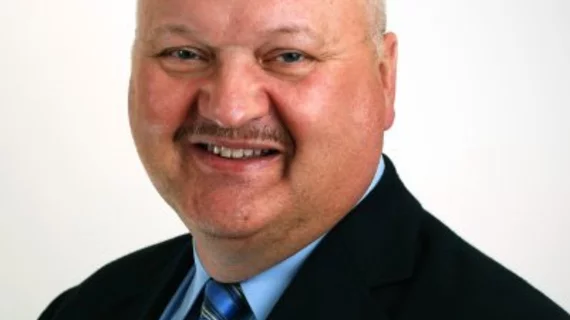Randy McCleese, MSIS, MBA, the chief information officer at Methodist Hospital in Henderson, Kentucky, was selected as the 2017 CIO of the Year by College of Healthcare Information Management Executives (CHIME) and the Healthcare Information and Management Systems Society (HIMSS), with the groups specifically citing his IT advocacy on behalf of smaller, rural providers.
Ahead of the HIMSS18 conference in Las Vegas, McCleese spoke with HealthExec to share some of his insights on small providers’ IT struggles, where he feels vendors are letting providers down and what blockchain and artificial intelligence (AI) could do for healthcare.
HealthExec: HIMSS and CHIME cited your experience with small and rural hospitals' IT concerns as among the many reasons you received this award. What's the most common challenge CIOs at those kinds of providers have to overcome?
Randy McCleese, MSIS, MBA: Small healthcare organizations must meet the same regulatory requirements as larger organizations. Typically, small healthcare organizations have a limited number of staff that must become knowledgeable in multiple areas to support everything needed. Whereas, larger organizations can have a greater number of staff that allow each individual to become a bit more specialized in their area of focus which, in turn, allows a higher level of expertise.
Based on some things that I have read and several years’ experience, smaller organizations tend to spend a significant portion of their capital budget on IT. It gets to the point that organizations have to make a critical decision as to whether to purchase a piece of equipment that can have direct patient care or purchase an IT system or IT system upgrade to meet regulatory requirements.
How have you seen health IT evolve at smaller and rural providers? Were they slower to recognize its importance or to have CIOs in place?
IT has become embedded within everything that happens in healthcare. Lots of organizations have been resistant to this change and have not funded it accordingly. This includes the placement of a person at the executive level of the organization that can provide input on how IT can advance healthcare.
In my opinion, lots of smaller healthcare providers are being taken over, merged, consumed by, or affiliated with larger organizations because they have not been able to keep up with the technological changes. The emphasis on IT being a part of healthcare delivery has increased dramatically within the last 15 years and especially after the passage of ARRA/HITECH in 2009. Small rural providers are much slower to react or change than their larger counterparts.
In your opinion, how well are vendors and regulators addressing the IT and EHR capabilities of small and rural providers?
Vendors tend to listen to small rural providers in a manner similar to the way they listen to larger providers. Unfortunately and in my opinion, there are not enough representatives from small rural providers that have or take the time to provide their input to vendors or regulators.
The number of small rural provider representatives, such as myself, at CHIME/HIMSS organized events on Capitol Hill and other events is very limited. There have been a few times that I was the only person representing small providers. Regulations tend to favor providers that practice in urban and suburban areas.
There seems to be an assumption on the part of the promulgated regulations that everyone in the country has an Internet connection and a computer/smartphone or similar device. That is just not the case in many rural areas of the US. The country is making progress in this area but healthcare regulations are ahead of the technology capabilities in many areas. Consolidation of provider organizations and consolidation of EHR vendors is a constant concern to small rural providers because of the cost associated with either happening.
Much of the talk in health IT over the past year has been about AI applications in healthcare. How could small and rural systems benefit from those sorts of solutions--and how far off are the days when AI is really make an impact on their daily work?
Small rural providers should be able to piggyback on what is being learned by large organizations. Many individuals are resistant to utilizing some of this type of information but that is changing as they see evidence that AI can have an impact on their patient's care. Providers pay attention when their work can be made easier by such things as computer assisted documentation or when AI can point out the possibility of something on an x-ray that a trained person cannot see. These types of developments help doctors to rely more upon technology even though they are sometimes skeptical.
Along those same lines, how could blockchain technology potentially help small and rural providers? Blockchain has significant possibilities in healthcare and especially in the area of interoperability. The concept of blockchain is still relatively new but it shows potential in such areas as trust, cost, patient identification and standards. There is a large number of rural providers in this country that need to exchange patient information with others in a very secure manner. This exchange needs to happen between small and large providers as smaller providers do not have the healthcare expertise that is prevalent in the larger counterparts.
Let's face it, small rural providers are the major healthcare providers that take care of the farmers of this country which are the ones that are providing the food for all of us whether we live in a rural or urban environment. Personally, I want to make sure those folks get the best healthcare.

